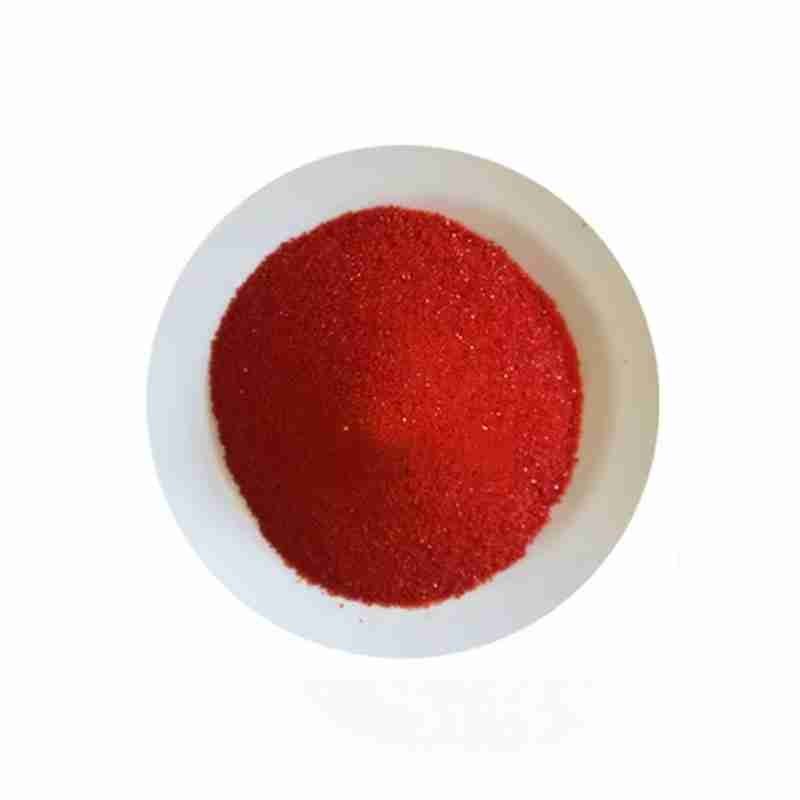Iron Hydroxide Oxide CAS #20344-49-4
Iron oxides, including iron hydroxides and hydrated oxides, are natural minerals and geocatalysts that are abundant in the earth??s crust. Because the chemical properties of iron are very reactive, there are many secondary iron minerals, such as maghemite (??-Fe2O3), hematite (??-Fe2O3), lepidocrocite (??-FeOOH), goethite ( ??-FeOOH), hydrated iron (III) oxide (Fe5HO8??4H2O) and magnetite (Fe3O4) exist in large amounts as suspended matter in the water system. Iron oxides play a very important role in various chemical and biological processes involving the transformation of organic compounds in aquatic ecosystems.
Hydrated iron (III) oxide refers to a natural nanoscale iron hydroxide mineral commonly found in the natural environment (soil, water sediments, etc.), and can also be easily synthesized in the laboratory. Hydrated iron(III) oxide is difficult to characterize due to its small size and low crystallinity.
发送询盘
Iron Hydroxide Oxide CAS #20344-49-4
| Iron hydroxide oxide Basic information |
| Product Name: | Iron hydroxide oxide |
| Synonyms: | Ferric oxide hydroxide;Ferrous acid;Iron monohydroxide monooxide;Iron(III) hydroxide, ^y-phase;Iron(III) hydroxide, ^a-phase;Iron(III) hydroxide, gamma-phase;Iron(III)oxide,Ferric hydroxide oxide;Goethite,Ferric hydroxide oxide, Iron(III)oxide |
| CAS: | 20344-49-4 |
| MF: | FeHO2 |
| MW: | 88.85 |
| EINECS: | 243-746-4 |
| Product Categories: | Metal and Ceramic Science;Oxides;Inorganics |
| Mol File: | 20344-49-4.mol |
 |
|
| Iron hydroxide oxide Chemical Properties |
| Melting point | 135??C |
| density | 3.4-3.9 |
| RTECS | NO7400000 |
| solubility | DMSO (Sparingly), Methanol (Slightly), Water (Soluble) |
| form | crystalline |
| color | Red-brown |
| Water Solubility | Soluble in mineral acids. Insoluble in water and ethanol. |
| Merck | 14,4025 |
| Exposure limits | ACGIH: TWA 1 mg/m3 NIOSH: TWA 1 mg/m3 |
| Stability: | Stable. |
| CAS DataBase Reference | 20344-49-4(CAS DataBase Reference) |
| NIST Chemistry Reference | iron(III) oxide hydroxide(20344-49-4) |
| EPA Substance Registry System | Iron hydroxide oxide (Fe(OH)O) (20344-49-4) |
- 2
- 2-diallylpent-4-en-1-amine
- 4
- 95-16-9
- Ammonium sulfamate
- Benzothiazole
- cas:67889-00-3ح2
- cas:83524-75-8 | pigment black 32
- cas:928836-00-4 | 2
- cas:932745-70-5 | 4
- Chemical Minerals
- Coconut diethanolamide
- Daily Chemicals
- discount
- for sale
- General pvc resin
- hexyl D-glucoside
- in stock
- Lauramidopropyl betaine
- LAURIC ACID MONOETHANOLAMIDE
- Petroleum Additives
- Plasticiser
- Ploymers
- price
- PVC
- quotation
- Raw Materal
- Remove term: Petroleum Additives Petroleum Additive
- SODIUM ETHYL 2-SULFOLAURATE
Related Products
Sodium aluminosilicate (CAS No.73987-94-7) is an inorganic compound.
It has a certain application in industry. For example, in the ceramic industry, sodium aluminosilicate can be used as a flux and an ingredient in ceramic glazes, helping to improve the performance and appearance of ceramics.
In some chemical processes, it may also function as a precipitating agent or an additive.
In the field of materials science, the properties and structural characteristics of sodium aluminosilicate make it have potential application value in the research and development of some new materials.
Chemical Name: Potassium Castorate
CAS No.: 8013-05-6
Molecular Formula: C57H107K3O12
Molecular Weight: 1101.74718
Appearance: Yellow Liquid
Carbon black, also known as carbon dark, is a kind of unformed carbon. It??s a light, loose and extremely fine black greasepaint with a veritably large face area ranging from 10 to 3000m2/g. It??s an deficient combustion of carbonaceous substances( coal, natural gas, heavy oil painting, energy oil painting,etc.) under conditions of inadequate air. Or products deduced from thermal corruption. Those made from natural gas are called?? gas dark??, those made from oil painting are called?? beacon black??, and those made from acetylene are called?? acetylene black??. In addition, there are?? trough black?? and?? furnace black??.
Chemical Name: o-Xylene
Synonyms: 1,2-Dimethylbenzene; ortho-xylene
CAS No.: 95-47-6
Molecular Formula: C8H10
Molecular Weight: 106.17
Copper(II) sulfate, with the chemical formula CuSO4, is a blue crystalline compound that is soluble in water. It is commonly used in agriculture as a fungicide and in the textile industry as a dye fixative. Copper(II) sulfate is also utilized in the manufacture of pigments, batteries, and as an algaecide in water treatment. Its distinctive blue color and reactivity make it a versatile chemical in various industrial applications, including chemical analysis and electroplating.
Chemical Name: Quercetin-3-O-sophoroside
CAS No.: 18609-17-1
Molecular Formula: C27H30O17
Molecular Weight: 626.52
Hexaammonium molybdate is a high-purity, water-soluble molybdenum compound with the chemical formula (NH4)6Mo7O24??4H2O. It is a crystalline solid that serves as a molybdenum source in various applications, including agriculture as a micronutrient fertilizer and in the industrial production of catalysts and pigments. Known for its stability and reactivity, it is used to enhance the properties of steel and other alloys, promoting their hardness and resistance to wear.
Common English name: 5-iodo-2,3-dihydropyridazin-3-one
CAS No.: 825633-94-1
Molecular formula: C4H3IN2O
Molecular weight: 221.98
Sample: Available
Chemical Name: Dehydrocholic acid
Synonyms: Acide dehydrocholique; Triketocholanic acid
CAS No.: 81-23-2
Molecular Formula: C24H34O5
Molecular Weight: 402.53
Appearance: Powder
Chemical Name: Imazalil Sulfate
CAS No.: 58594-72-2
Molecular Formula: C14H14Cl2N2O.H2SO4
Molecular Weight: 395.26
Appearance: Solid
Bentonite, sodium-activated, is a type of clay rich in montmorillonite minerals, which undergoes a process to increase its sodium content. This alteration enhances its swelling and adsorptive properties, making it a highly effective thickener and gel-forming agent. Sodium bentonite is widely used in drilling muds, foundry sands, and as a binder in various industrial applications. Its ability to absorb liquids and form stable gels makes it invaluable in cosmetics, agriculture, and as a component in the manufacturing of ceramics and paper products.
Aluminum chlorohydrate is an inorganic compound often used as a coagulant in water treatment processes. It is also known for its astringent properties and is utilized in various personal care products, such as antiperspirants and deodorants, due to its ability to temporarily close sweat glands. It enhances the viscosity and stability of formulations, making it a valuable ingredient in cosmetics and pharmaceuticals.


















